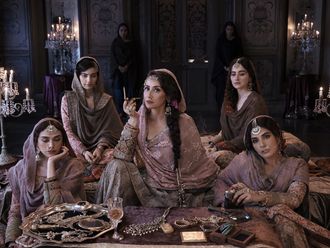The numerals have an ominous ring in retrospect. Philip Larkin said it was beyond him to call his great poem from “The Whitsun Weddings” “1914”: its sound was too harsh. He preferred the “decent obscurity” of “MCMXIV”, with its suggestion of a lapidary inscription on a war memorial. Those famous lines — “Never such innocence,/ Never before or since,/ As changed itself to past/ Without a word” — conjure the year as a fatal break, the moment when a way of life was destroyed utterly and for ever. But was it innocence that died? Mark Bostridge’s “The Fateful Year”, an absorbing kaleidoscope of events and episodes from a century ago, argues that England in 1914 was no more or less innocent than any other time — indeed, even before war engulfed the country on August 4, it was a crucible of violent antagonisms that touched on gender, class, labour and nationhood.
The temptation for posterity is to impose pattern and meaning where none originally existed. Historical events happen, one thing after another — not necessarily one thing because of another. Nevertheless, we can’t help hunting for ways to make the jigsaw fit. Bostridge has laid out the year as a three-act drama, the first covering January to April, the second the summer leading up to war, the third the opening five months of the conflict, from August to December. But it could as easily have been structured as a two-parter, or a 12-parter; form has little bearing on content.
It was a society in uproar. While their sisters were being force-fed in prison, militant suffragettes had stepped up their campaign of urban sabotage, detonating bombs in London churches and setting fire to houses, pavilions and railway stations up and down the land. The most notable stunt occurred at the National Gallery, where Mary Richardson took an axe to the canvas of “The Rokeby Venus”, an act of vandalism recounted in the press as if it were an act of murder — “Slasher Mary” had left Venus with “a cruel wound in the neck” and a “broad laceration” near the shoulder.
At the Royal Academy Sargent’s portrait of Henry James suffered a similar attack from a militant’s meat cleaver. James wrote to a friend: “I naturally feel very scalped and disfigured, but you will be glad to know that I seem to be pronounced curable.” In this febrile atmosphere there arose the prospect of a political assassination — what Bostridge calls, modernly, a “nightmare scenario” — fuelled by rumours of suffragettes practising their marksmanship at shooting ranges. The clock keeps ticking, the sights keep narrowing on Archduke Franz Ferdinand’s date with destiny in Sarajevo.
Industrial unrest picked up again (its high summer was in 1911). A coal strike in January put London in a deep freeze, forcing middle-class women to bring home coal in cabs. More heartening is the story of the Burston school strike, when a plucky 14-year-old, Violet Potter, led a walkout of schoolchildren in protest at the sacking of their teachers, Tom and Kitty Higdon. The couple, hugely popular with their pupils, had been undermined and then dismissed by the machinations of the village rector, Charles Tucker Eland, who sounds like a fugitive from the pages of “Middlemarch”. This rural vignette of petty-minded animosities and grassroots resistance (“Pupil Power” is the chapter title) became a celebrated case in the struggle for social justice. It also marks an early staging post in the decline of church influence on local politics.
On a more cosmopolitan level, we are presented with an account of the first English production of Shaw’s “Pygmalion”, from troubled rehearsals to its premiere in April at Her Majesty’s theatre. Two aspects of the production astonish. The first is that Eliza Doolittle, the unformed 18-year-old flowergirl, was played by Mrs Patrick Campbell, then in her 50th year. The second is the fuss over her utterance of a single expletive, which scandalised moralists and caused audiences to rock with laughter. The offending word was “bloody”.
The backstage drama of unrequited passions and wounded vanities (Shaw on Mrs P: “a one-part actress and that one not a real part”) makes for lively reading, but not for the first time in the book you wonder at its relevance. Bostridge, who confesses in his foreword that as a 14-year-old he wrote a play about Pygmalion’s first night, seems to have included the anecdote for entirely personal reasons.
Similarly, I was fascinated by the unfolding story of the 61-year-old prime minister Herbert Henry Asquith’s yearning for the love of Venetia Stanley, a 26-year-old friend of his daughter Violet. His private correspondence to her is not only the record of an old man’s romantic fancies but of his travails with the Irish on the question of home rule. The tightrope he walks fairly takes the breath away: where are the phone-hackers of yesteryear? But again, you have to ask what point is being made. Asquith’s (mostly) unsuspected passion could only be called “fateful” if it had brought down his government. Instead, it is just an extraordinary sidelight.
Hints, forewarnings, inadvertent prophecies of what was to come spike the air like pollen. The nation’s paranoia was inflamed by scaremongering fiction that envisaged a German invasion (“The Riddle of the Sands” and so on). Foreign agents were suspected of lurking in readiness. A thunderstorm in June killed seven people on Wandsworth Common. An intruder was arrested inside Buckingham Palace. Yet whatever dread the public may have felt at these portents, Asquith’s government seemed to be wholly unprepared for the coming catastrophe. With one eye still on Ulster, they were slow to react to the sparks in the Balkan tinderbox. Even this late in the day the Royal Flying Corps lagged far behind other European airforces in both the training of pilots and adequate airfields. This was principally because of a conviction that, if war came, the decisive battles would be fought not on land or in the air but at sea. Churchill, as First Lord of the Admiralty, had been making sure that the navy was up to scratch.
As hopes of peace are extinguished, something is lost in the book, too. The ironic undertow disappears, and the narrative momentum rather stalls. Those first seven months have the uncertain peril of a dream, exciting and disquieting at once, wherein a last ditch escape seems always at hand. Once Europe is mobilised and the million-footed marching starts up, the escape route shuts fast: tragedy has commenced.
Bostridge’s clean, well-mannered prose and careful research never waver, and I was still gripped by some of the material he has chosen: for instance, the “white feather” phenomenon of women taking it on themselves to shame and intimidate men into enlisting. Suffragettes, alas, were among the feather-givers, perhaps goaded into revenge on menfolk who had belittled them during peacetime.
It is impossible not to be moved by the example of Violet Cecil’s desperate efforts to discover the fate of her 18-year-old son George, missing in action after the Battle of Mons: “My instincts tell me he is alive — my reason that he is dead.” Her experience leads her, poignantly, to take on the responsibility of notifying the mothers and wives of the soldiers in George’s battalion of their loved ones’ final resting place. There is no doubting this book’s eye for a good story, or the skill in telling it. I am not sure there is a unifying idea to chew on, though, other than Asquith’s favourite axiom: “the Expected does not Happen”. And that is merely the verbal equivalent of a shrug.
The Fateful Year: England 1914
By Mark Bostridge, Viking, 432 pages, £25








